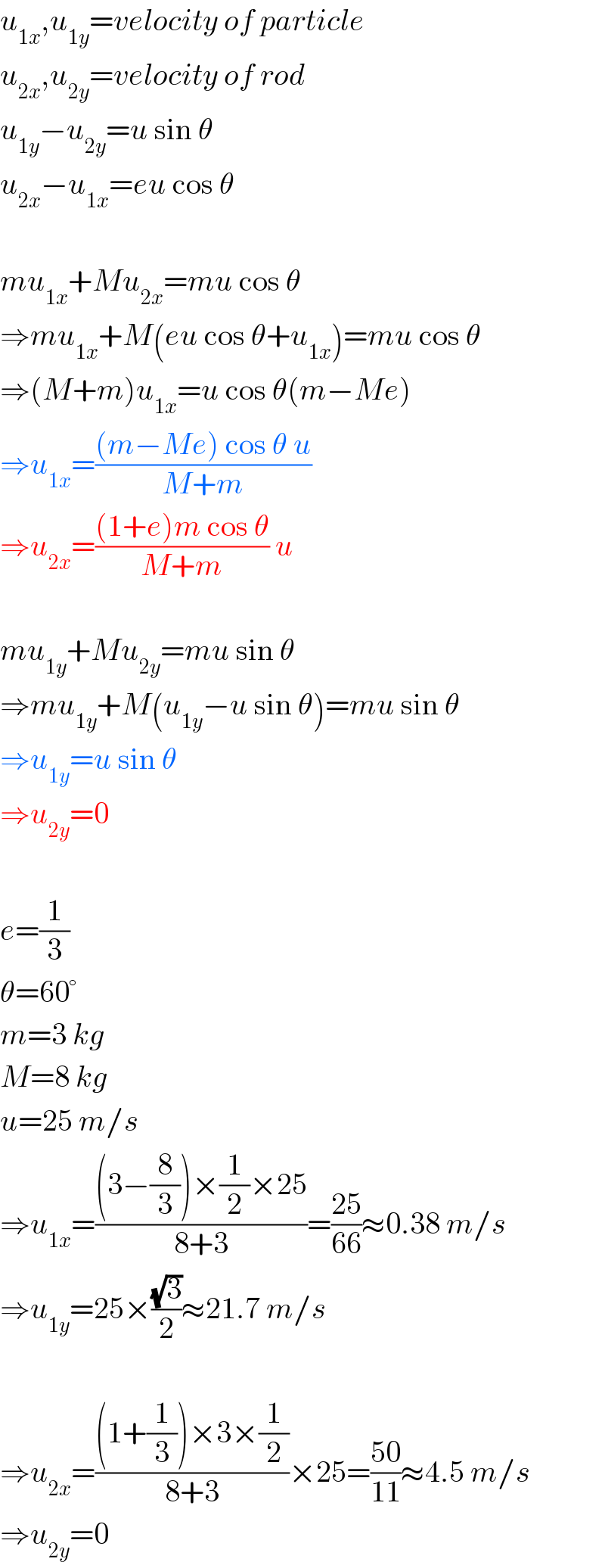
Question and Answers Forum
Question Number 29254 by Tinkutara last updated on 06/Feb/18

Commented by Tinkutara last updated on 06/Feb/18
Find the exact velocity vectors with x and y components. e=1/3 Theta=60° m=3 kg M=8 kg L=6 m u=25 m/s Tell me your final answers so that I can check whether its correct or not.
Answered by mrW2 last updated on 06/Feb/18

Commented by Tinkutara last updated on 06/Feb/18
Why momentum is conserved in x direction?
Commented by mrW2 last updated on 06/Feb/18
I don't understand your doubt. The momentum should be conserved in every direction, so why not in x direction?
Commented by Tinkutara last updated on 06/Feb/18
But momentum is not conserved in that direction in which impulsive forces act so that's why I am asking this.
Commented by mrW2 last updated on 06/Feb/18

Commented by Tinkutara last updated on 07/Feb/18
Thank you very much Sir! I got the answer.
